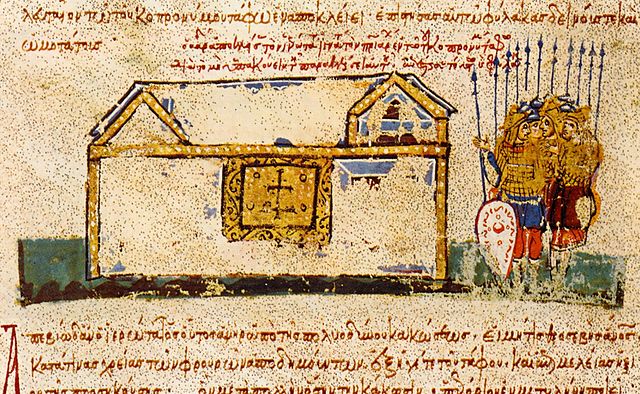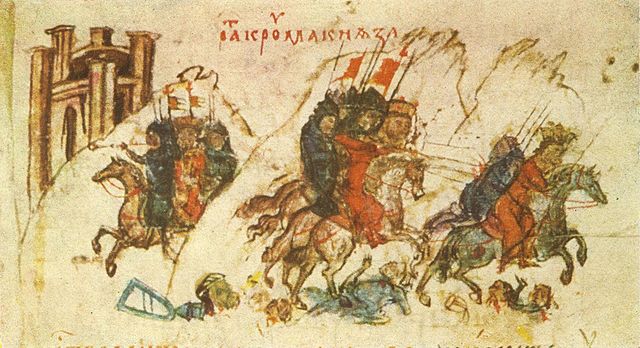Constantine V was Byzantine emperor from 741 to 775. His reign saw a consolidation of Byzantine security from external threats. As an able military leader, Constantine took advantage of civil war in the Muslim world to make limited offensives on the Arab frontier. With this eastern frontier secure, he undertook repeated campaigns against the Bulgars in the Balkans. His military activity, and policy of settling Christian populations from the Arab frontier in Thrace, made Byzantium's hold on its Balkan territories more secure.
Soldiers deface or demolish an iconodule church on the orders of Constantine V (left), Manasses Chronicle, 14th-century Bulgarian manuscript
A mosaic cross in the apse of the Hagia Irene church in Istanbul. It is one of the few artistic remains of iconoclasm. Created during the reign of Constantine it occupies the semi-dome of the apse usually reserved for a devotional image, often a depiction of Christ Pantocrator or the Theotokos
Soldiers at the tomb of Constantine V, Skylitzes Chronicle
Icon of St. Anthousa, daughter of Constantine V
The First Bulgarian Empire was a medieval state that existed in Southeastern Europe between the 7th and 11th centuries AD. It was founded in 680–681 after part of the Bulgars, led by Asparuh, moved south to the northeastern Balkans. There they secured Byzantine recognition of their right to settle south of the Danube by defeating – possibly with the help of local South Slavic tribes – the Byzantine army led by Constantine IV. During the 9th and 10th century, Bulgaria at the height of its power spread from the Danube Bend to the Black Sea and from the Dnieper River to the Adriatic Sea and became an important power in the region competing with the Byzantine Empire.
Part of the Pliska fortress
Khan Krum defeats the Byzantine Emperor Nicephorus I in the battle of the Varbitsa Pass, Manasses Chronicle
Emperor Simeon I: The Morning Star of Slavonic Literature, painting by Alfons Mucha
Samuel's Fortress in Ohrid








